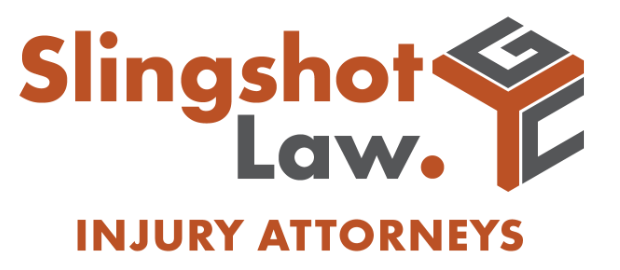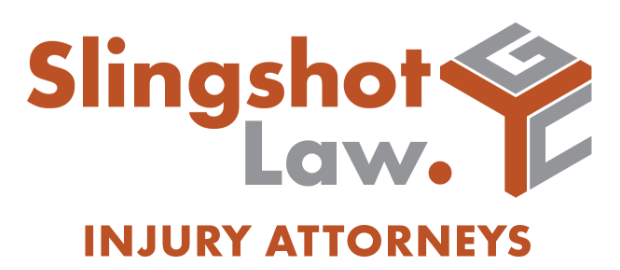Being in any vehicle collision is terrifying, but when a massive commercial truck is involved, the fear and sense of helplessness are magnified. If that truck driver leaves the scene of an accident, it adds to the injustice and confusion of an already traumatic event. It is a serious crime for a driver to flee, and it immediately complicates your path to recovery.
When a trucker flees the scene of an accident, it leaves victims with urgent questions about their rights, their recovery, and what comes next. Knowing the legal consequences for the driver, how to protect your own interests, and the potential avenues for financial recovery can provide a sense of clarity and control.
Key Takeaways about What Happens When a Truck Driver Leaves the Scene of an Accident
- It is a serious criminal offense for a truck driver to leave the scene of an accident, with penalties that can include fines, license revocation, and imprisonment.
- Even if the driver is not immediately found, an injured person may have options for compensation through their own insurance policy, such as Uninsured/Underinsured Motorist (UM/UIM) coverage.
- Gathering as much information as possible after the incident—including witness contacts, photos, and any details about the truck—is vital for both police investigations and potential civil claims.
- Investigations to identify a hit-and-run truck driver can involve reviewing traffic and business surveillance footage, tracking down witnesses, and analyzing physical evidence.
- Multiple parties, not just the driver, could be held accountable, including the trucking company, which may be responsible for its employee’s actions.
The Legal Consequences When a Truck Driver Leaves the Scene of an Accident
When a truck driver leaves the scene of an accident, they are committing a crime commonly known as a “hit-and-run.” Both Texas and Colorado have strict laws in place to hold fleeing drivers accountable. These laws are not just about traffic violations; they are about a fundamental duty to stop, render aid, and take responsibility after a collision.
The severity of the criminal charges often depends on the extent of the damage and, most importantly, whether anyone was injured or killed. In Texas, leaving the scene of an accident involving injury can result in a felony charge.
Similarly, Colorado law outlines the duty to stop, and a driver who fails to do so after causing an injury can face anything from a serious misdemeanor to a felony, depending on the circumstances.
For the commercial truck driver, the consequences are even more severe due to their professional responsibilities. Potential penalties they face include:
- Criminal Charges: Depending on the state and the accident’s outcome, these can range from a misdemeanor for property damage to a serious felony if someone is severely injured or killed.
- Fines and Imprisonment: A conviction can carry substantial fines and significant time in jail or prison.
- License Suspension or Revocation: A hit-and-run conviction will almost certainly lead to the suspension of the driver’s personal license and, crucially, their Commercial Driver’s License (CDL), effectively ending their career.
- A Permanent Criminal Record: This can impact their ability to find employment in any field in the future.
It’s important to understand that these criminal proceedings are handled by the state and are separate from any civil claim you may file to recover compensation for your injuries and losses. The criminal case focuses on punishing the driver for breaking the law, while a civil case focuses on making you whole again financially.
What to Do After a Truck Hit-and-Run

After an experience as jarring as a hit-and-run, your first priority is always your health and safety. Once the immediate emergency has passed and you are away from the scene, the steps you take can be crucial in protecting your well-being and preserving your ability to seek compensation later. The feeling of being overwhelmed is completely normal, but focusing on a few key actions can make a significant difference.
First and foremost, seek a thorough medical evaluation, even if you feel you only have minor bumps and bruises. The adrenaline from a crash can mask pain, and some serious conditions, like traumatic brain injuries or internal bleeding, may not show immediate symptoms. A medical professional can identify hidden injuries, and the visit creates an official record of the harm you sustained in the crash.
Next, while the memory is fresh, document everything you can recall. The smallest detail could be the key that helps law enforcement identify the driver.
- The Truck and Driver: Write down everything you remember. This includes the color of the cab, any logos or writing on the trailer, the company name, any visible numbers (like a DOT number or license plate, even a partial one), and any distinguishing features like unique lights or damage.
- Location and Time: Note the exact location of the accident. Was it on a busy stretch of I-35 in Austin or near the I-70 business loop in Grand Junction? Note the time of day, weather conditions, and direction of travel.
- Witness Information: If anyone stopped to help, make sure you have their name and phone number. Witnesses are invaluable, as they may have seen something you missed in the shock of the moment.
- Your Own Documentation: Take pictures of the damage to your vehicle from multiple angles. Also, take photos of any visible injuries you have.
Finally, if you haven’t already, file a formal police report. A police report is the official first step of the investigation and is a critical piece of evidence for any insurance claim you might make. Even if the police were at the scene, ensure a report is filed and that you get a copy of the report number for your records.
These initial actions create a strong foundation for the investigative and legal processes that may follow as you seek a resolution.
How Can We Find the Driver Who Left the Scene?
One of the most pressing questions after a hit-and-run is, “Will they ever find the person who did this?” While it’s not always possible, there are more ways to track down a driver who leaves the scene of an accident than many people realize. It often requires a combination of police work, modern technology, and diligent investigation.
Law enforcement agencies take hit-and-run cases, especially those involving commercial vehicles and serious injuries, very seriously. They can issue a “Be on the Lookout” (BOLO) alert to other officers in the area with the truck’s description. Their investigation will typically involve checking traffic camera footage from intersections, highways, and toll roads near the accident site.
Beyond the police investigation, other sources of evidence can be uncovered.
- Witnesses: This is often the most powerful tool. A nearby driver with a dashcam may have captured the entire event, including a clear view of the license plate. Pedestrians, residents, or other drivers might have seen which direction the truck headed or recalled a key detail about its appearance.
- Business Surveillance: Many businesses along major roads like MoPac Expressway in Austin have external security cameras. These cameras might have recorded the truck as it passed by before or after the collision. A thorough investigation involves identifying these potential sources and requesting the footage.
- Trucking Company Records: If even a partial company name or logo was seen, it can be used to narrow down potential suspects. Trucking companies maintain detailed records, including GPS data from their vehicles, that can place a specific truck at the scene of the accident at the exact time it occurred.
- Repair Shops: The truck will have damage from the collision. Investigators or legal representatives can contact local truck repair and body shops to see if a driver has come in for suspicious repairs that match the damage from your accident.
Finding the driver can be a complex puzzle, but with so many potential sources of information, there is often a good chance of identifying the responsible party and holding them accountable.
Who Pays for My Damages in a Hit-and-Run Truck Accident?

Uncertainty about who will cover medical bills, lost income, and vehicle repairs is a major source of stress after a truck hit-and-run. The path to compensation depends heavily on whether the driver and their trucking company are identified.
If the Driver Is Identified
If the investigation successfully identifies the truck driver and their employer, a claim can be filed against the trucking company’s commercial insurance policy. These policies are required by federal law and typically have much higher limits than personal auto insurance, reflecting the greater potential for damage that a large truck can cause. The accountable parties could include:
- The Truck Driver: For their negligent actions in causing the crash and for the criminal act of fleeing.
- The Trucking Company: Under a legal concept called vicarious liability, an employer is generally responsible for the actions of an employee who is on the job. The company could also be directly negligent for things like improper driver screening, inadequate training, or poor vehicle maintenance.
If the Driver Is Never Found
This is the scenario that worries most people, but it doesn’t mean you are left with no options. This is where your own auto insurance policy can provide a crucial safety net.
- Uninsured/Underinsured Motorist (UM/UIM) Coverage: This is a part of your own car insurance that steps in when the at-fault driver either has no insurance or, as in a hit-and-run, cannot be identified. Your UM/UIM policy can cover your medical expenses, lost wages, and pain and suffering, up to your policy limits.
- Personal Injury Protection (PIP) or Medical Payments (MedPay): In Texas, PIP coverage is included in standard auto policies unless you reject it in writing. It helps pay for your initial medical bills and some lost wages, regardless of who was at fault. Colorado offers a similar coverage called Medical Payments (MedPay), which can be used for your immediate medical needs.
Even if the person who hit you is never brought to justice in a criminal court, these insurance provisions can provide the financial resources you need to recover from your injuries. Handling a UM/UIM claim can be complicated, as you are essentially in an adversarial position with your own insurance company, but it is a right you have under your policy.
Why a Truck Hit-and-Run Is Different from a Car Accident
While any hit-and-run is a serious event, one involving a commercial truck presents unique challenges. The sheer size and weight of a semi-truck mean that collisions are far more likely to result in catastrophic injuries or fatalities.
The legal landscape is also more complex. Commercial trucking is a highly regulated industry, governed by both state law and a body of federal rules managed by the Federal Motor Carrier Safety Administration (FMCSA). These regulations cover everything from how many hours a driver can be on the road to maintenance schedules and hiring practices. A driver leaving the scene is a profound violation of their professional duties and federal regulations.
Furthermore, accountability often extends beyond the driver. A thorough investigation might reveal that the trucking company’s practices contributed to the accident. For example, if the company pressured the driver to violate hours-of-service rules, leading to fatigue and a panicked decision to flee, the company could share in the liability. This adds layers to an investigation that don’t exist in a typical car-on-car accident.
When a Truck Driver Leaves the Scene of an Accident FAQs
Here are answers to some common questions that arise after a commercial truck hit-and-run.
How long do I have to file a claim in Texas or Colorado?
Every state has a law known as the statute of limitations, which sets a strict deadline for filing a lawsuit. In both Texas and Colorado, you generally have two years from the date of the injury to file a personal injury lawsuit. It is important to act well before this deadline expires.
What kind of compensation can I recover after a truck hit-and-run?
If a source of recovery is established, you may be able to seek compensation for a range of damages. This can include all of your past and future medical bills, lost income and diminished earning capacity, pain and suffering, emotional distress, and physical impairment.
Should I talk to an insurance adjuster from the trucking company if they contact me?
It is generally advisable to be very cautious when speaking to an at-fault party’s insurance adjuster. Their job is to protect their company’s financial interests, which often means minimizing the value of your claim. They may try to get you to make a recorded statement that could be used against you later. It can be helpful to consult with a legal professional before having this conversation.
You Don’t Have to Face This Fight Alone

Feeling abandoned and invisible after a hit-and-run truck accident? On top of physical injuries and emotional trauma, you are left to deal with police reports, medical bills, and uncooperative insurance companies. It’s a battle no one should have to fight on their own. The odds can feel stacked against you, much like a David-and-Goliath struggle, but you have the right to seek a fair outcome.
The team at Slingshot Law is built on the principle of leveling the playing field for people who have been wronged. We understand the tactics used by insurance giants and are prepared to stand up for your rights.
If you or a loved one has been injured in a hit-and-run truck accident in Austin or Grand Junction, we are here to help. Contact us today at (866) 647-1311 or through our online form for a free, no-obligation consultation to discuss your case and learn more about your options.


